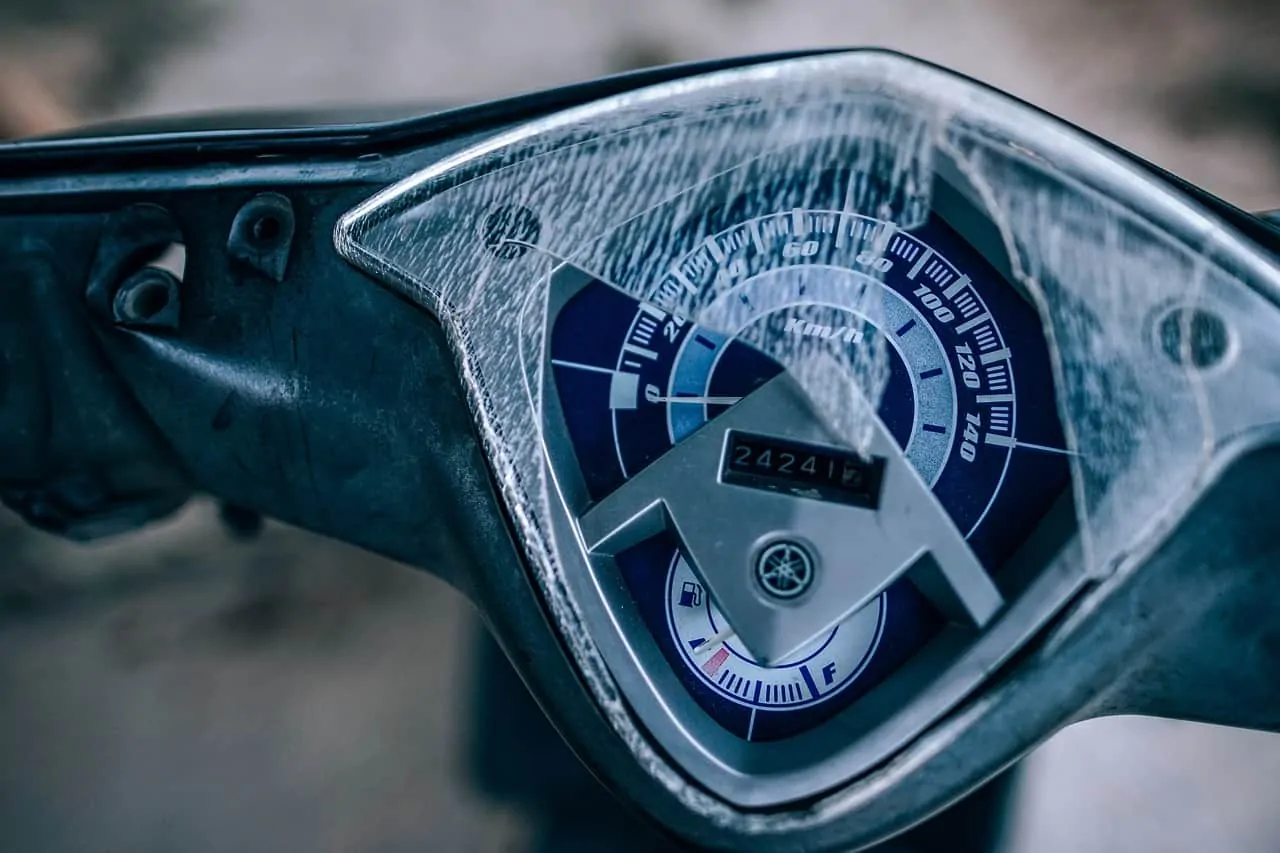Bad motorcycle batteries are problematic as they can cause vehicular accidents from engine failure. You can spot a motorcycle battery by performing routine checks.
Four ways to tell if the motorcycle battery is bad:
- Superficial inspection of the battery
- Using a voltmeter to take voltage readings
- Load testing
- Using a hydrometer to measure specific gravity of battery.
A bad battery has warning signs like flickering motorcycle headlights, a sputtering engine, an irresponsive horn, and more. These indicate that it’s time for a thorough checkup to determine if your motorcycle battery is bad and will need to be recharged or replaced.
How To Test The Motorcycle Battery
A routine motorcycle battery checkup will give you an overview of the battery health. It is also the surest way to identify a bad battery so that you can do the necessary actions to fix or replace it.
Superficial Inspection
This step involves looking at the exterior of the motorcycle battery and checking for telltale signs of destruction. Locate the motorcycle battery and remove its shell. The location varies from motorcycle to motorcycle so refer to the manual for the exact location. Look for signs of damage like:

-
Broken positive and/or negative terminals
The terminals are the points at which the cables connect to the batteries to drive power to the rest of the engine. If they are loose or broken, the power flow will become interrupted and will cause the battery to short circuit. This sudden burst of power that is not properly conducted to other outlets will cause some burning, which can melt some parts of the battery. The extreme heat byproduct can also lead to explosion.
-
Presence of bumps or bulges on the case of the battery
Bumps or bulges are signs of overcharging. They occur when the battery was transmitted with way more energy than its carrying capacity. The plates will bloat which results to bumps and bulges on the case.
-
Presence of cracks on the case
Cracks can result from many things. The battery may have been mishandled. The case may have cracked open when the battery plates expanded upon being overcharged. Cracks don’t necessarily cause batteries to stop malfunctioning altogether but they are dangerous if left unresolved. For safety reasons, replace the battery if there are cracks present as they are unsafe to use.
-
Presence of leakage (if you have a wet cell battery)
Leakages may occur in wet cell batteries. Make sure to properly seal the plastic caps because these leakages can cause corrosion on the terminals, cables, and even the battery case.
These batteries have a liquid acid or water component that needs to be topped up to keep the battery functional. It’s dangerous to use a dried up battery. The plates will overheat and burn. Make sure to regularly check the liquid level and top up when necessary.
Make the refills quick and seal the caps tightly because exposing the plates to oxygen will cause sulfation. This sulfur buildup remains to be the leading cause of motorcycle battery failure.
Use A Voltmeter
AstroAI Digital Multimeter
 |
| Check Price |
A voltmeter is a device used to measure the voltage reading of motorcycle batteries. The reading is a good determiner of the charge level. Each value has corresponding implications regarding the health status of the battery.
| Voltage Reading | Charge |
| 12.7 – 13.2 | 100% |
| 12.4 | 75% |
| 12.2 | 50% |
| 12 | 25% |
| 0-11.9 | Discharged |
There are more ways to interpret the voltage readings. A reading that says 0 volts may be due to a short circuit. If the battery can’t get a voltage reading that’s higher than 10.5 volts even after being charged, then there might be dead cells inside the battery. A battery that’s supposedly fully charged yet only reads 12.4 volts or less means that the cells are sulfated.
Sulfation is prevalent and is the leading cause of dead batteries. The good news is that mild cases can be reversed by simply recharging the batteries. The current will reverse the sulfation into electrolytes so that the battery can synthesize power again. Sulfation, if left untreated, will worsen and harden over time.
Another reason to avoid sulfation at all costs is because it reduces the battery potential and may render it incapable of being fully charged. It also makes your battery drain faster than normal.
Load Testing
Load testing can be performed by the professionals at motorcycle shops or by yourself within the comforts of your own home. All you need is a functional voltmeter. Load testing refers to testing the battery’s capacity under full load. It is getting a voltage reading while the motorcycle engine is running and the battery is actively used.

Prepare the battery by charging it at full capacity. Expose the battery terminals and attach the voltmeter without detaching the battery from the rest of the motorcycle. Start the motorcycle engine and then get the voltage reading. Take note of the initial voltage reading and the final voltage reading after you started the ignition.
A battery at 12 V that drops to 9.5 – 10.5 V and holds that reading for thirty seconds is a healthy battery. If the reading continuously drops, then the battery might be faulty. A voltage reading of zero also means a dead battery or it may indicate an open cell. If this occurred to a brand new battery, then there might be a manufacturing problem. Try to use your battery warranty for a replacement or checkup.
Use A Hydrometer
EZRED SP101 Battery Hydrometer
 |
| Check Price |
A hydrometer is used to measure the specific gravity of the battery electrolytes. It measures the ratio of sulphuric acid to water. The specific gravity of water is 1.000. The specific gravity for sulphuric acid is 1.835. In a nutshell, a hydrometer reading of 1.265 to 1.280 means that the motorcycle battery is fully charged while a reading of 1.230 to 1.260 means that it needs to be charged further. It is also important to make the hydrometer readings at a temperature of 25 C for ideal results.
